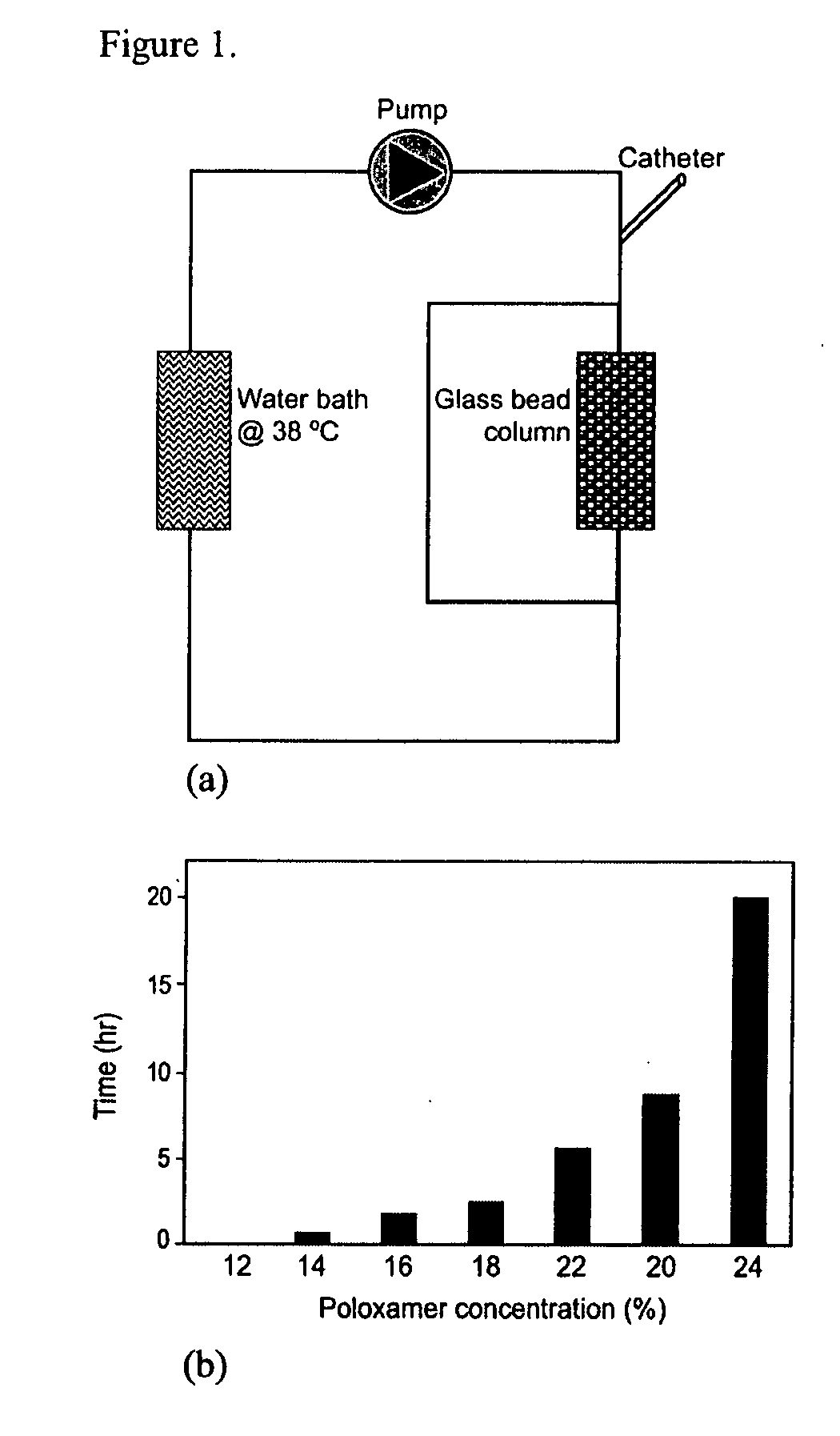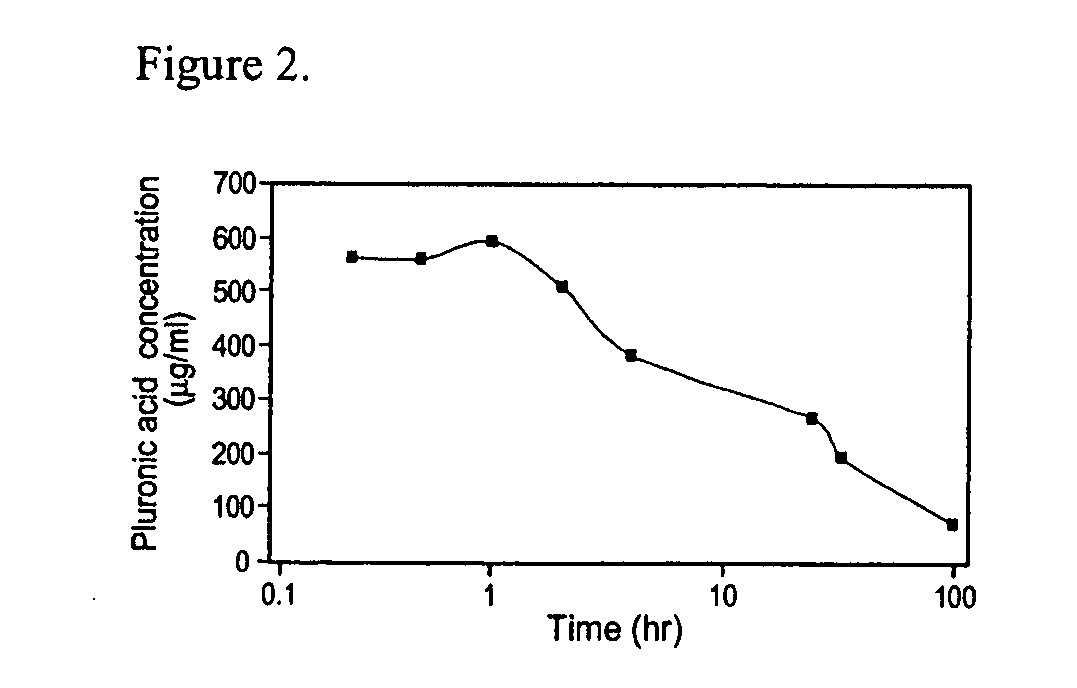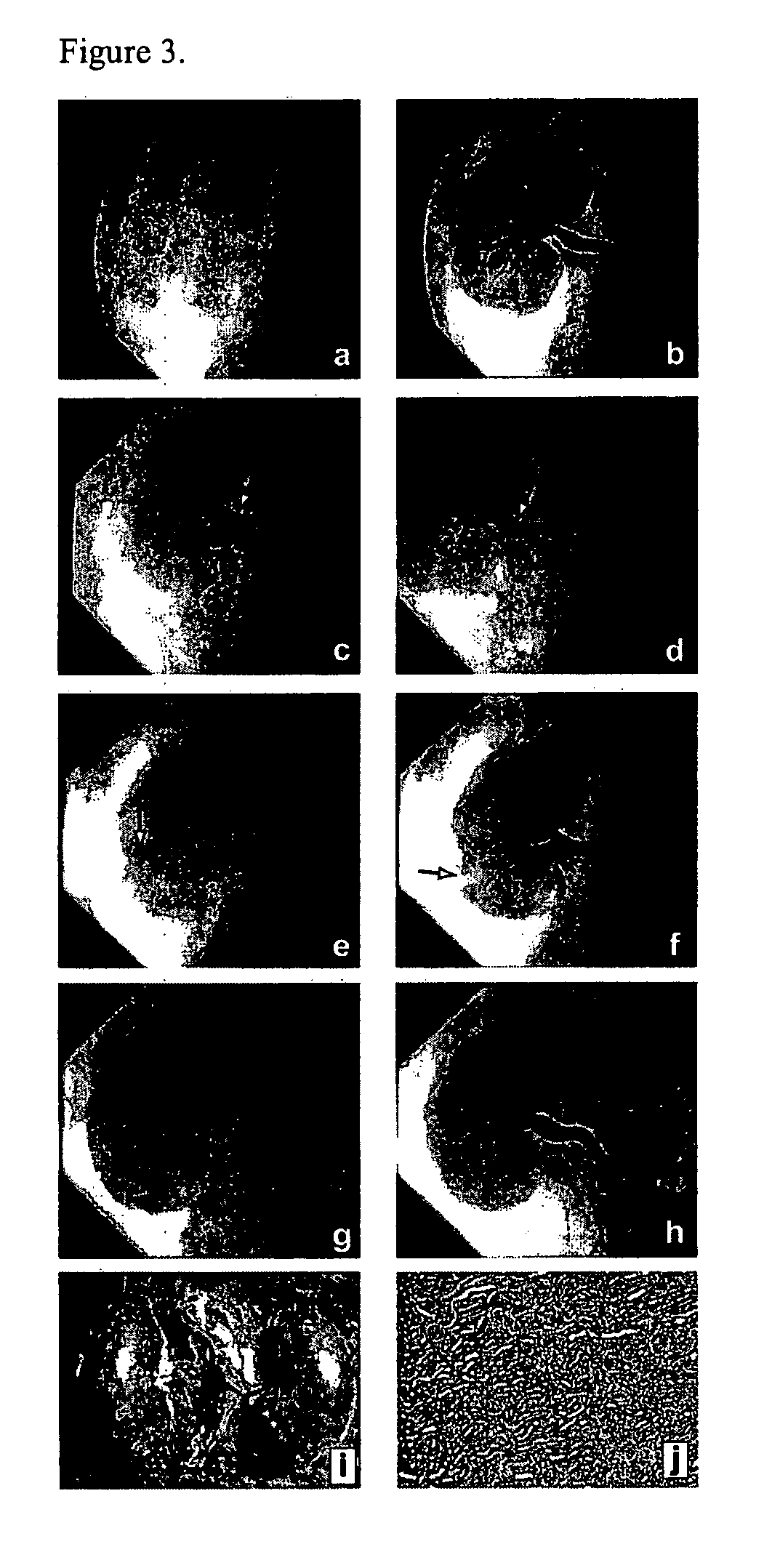Temporary embolization using inverse thermosensitive polymers
a thermosensitive polymer and embolization technology, applied in the direction of antibacterial agents, drugs, prostheses, etc., can solve the problems of starch microsphere deformation rapid, permanent embolization of embolization agents, and too short timeframe for most applications
- Summary
- Abstract
- Description
- Claims
- Application Information
AI Technical Summary
Benefits of technology
Problems solved by technology
Method used
Image
Examples
example 1
[0175] Polymer Formulation
[0176] Purified poloxamer 407 (polydispersity index, 1.06) (Hinsbar Laboratories, Clawson, Mich., USA) was added slowly to ice-cold saline under stirring at twice the desired concentration for the final formulation. As the poloxamer started to go into solution, ice-cold contrast agent (Omnipaque™ 300, Amersham Health, Princeton, N.J., USA) was added to the final volume. The initial slurry was stirred overnight in an ice bath and then sterilized by filtration. For in vitro experiments, a drop of food coloring was added to aid the visual assessment of dissolution.
example 2
[0177] In Vitro Model of Temporary Embolization
[0178] An in vitro model was used to study the time of dissolution of gels of various concentrations (14-24% (w / w)) of poloxamer 407. The in vitro model consisted of a 5 mL column filled with glass beads of 200-400 micron size, mimicking a capillary bed (FIG. 1 a). The column, immersed in a heated water bath at 38° C., was perfused at a flow rate of 400 mL / min using a Harvard pump. A bypass around the column was used for flow diversion around the occlusion. In a typical experiment, 1 mL of the polymer solution was injected via a coaxial catheter 2 centimeters from the top of the glass column. Time to dissolution was determined visually by the disappearance of the gel and reestablishment of flow through the column. Dissolution time of poloxamer 407 according to concentration is illustrated in FIG. 1b. As a rule, dissolution in vitro was much delayed as compared to in vivo experiments. For example, the 22% (w / w) concentration was found t...
example 3
[0179] Temporary Embolization In Vivo
[0180] In Vivo Vascular Occlusion
[0181] Protocols for animal experimentation were approved by the Institutional Animal Care Committee in accordance with guidelines of the Canadian Council on Animal Care. All endovascular procedures were performed under general anesthesia. Eight Beagles weighing 10 to 15 kg were sedated with an intramuscular injection of acepromazine (0.1 mg / kg), glycopyrrolate (0.01 mg / kg), and butorphanol (0.1 mg / kg), and anesthetized with intravenous thiopental (15 mg / kg). Animals were ventilated artificially and maintained under surgical anesthesia with 2% isoflurane. Poloxamer 407 (22%) was kept on ice during interventions. Saline containing syringes were also kept on ice to cool the catheter immediately before poloxamer injections.
[0182] Rapid injection through 5-F catheter was then elected for most embolizations (Balt, Montmorency, France). Catheterization was performed by percutaneous transfemoral venous and arterial ap...
PUM
| Property | Measurement | Unit |
|---|---|---|
| polydispersity index | aaaaa | aaaaa |
| polydispersity index | aaaaa | aaaaa |
| polydispersity index | aaaaa | aaaaa |
Abstract
Description
Claims
Application Information
 Login to View More
Login to View More - R&D
- Intellectual Property
- Life Sciences
- Materials
- Tech Scout
- Unparalleled Data Quality
- Higher Quality Content
- 60% Fewer Hallucinations
Browse by: Latest US Patents, China's latest patents, Technical Efficacy Thesaurus, Application Domain, Technology Topic, Popular Technical Reports.
© 2025 PatSnap. All rights reserved.Legal|Privacy policy|Modern Slavery Act Transparency Statement|Sitemap|About US| Contact US: help@patsnap.com



